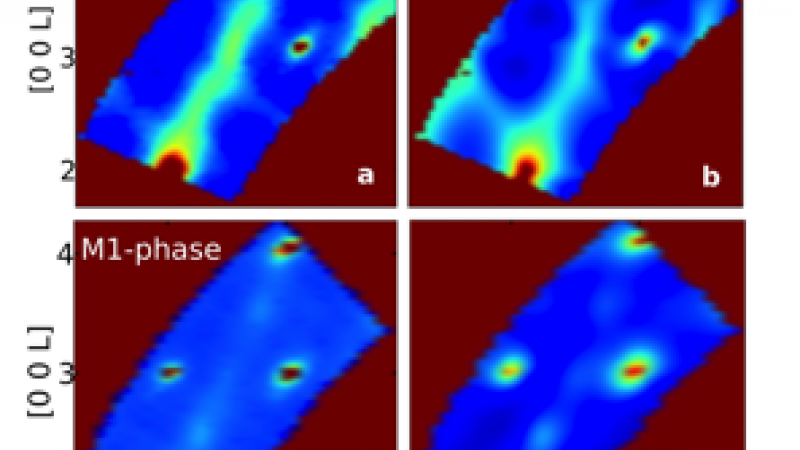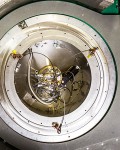The microscopic driving forces accounting for the thermodynamics of metal-insulator transition in vanadium dioxide (VO2) were unraveled by team of CAMM researchers (J. Hong and O. Delaire) in collaboration with a group in ORNL’s MSTD division (J. Budai et al.) and researchers at Argonne National Lab’s Advanced Photon Source (APS). The team used software tools developed in CAMM to compute the phonon dynamical structure factor, S(Q,E), and the phonon density-of-states (DOS), based on first-principles simulations. The simulations were compared against inelastic neutron scattering measurements of the phonon DOS, performed on the ARCS spectrometer at SNS, and diffuse and inelastic x-ray scattering measurements performed at the APS synchrotron. The simulations employed large-scale ab-initio molecular dynamics (AIMD) calculations, which were performed on the Edison supercomputer at NERSC via the CAMM computing allocation. The results of the study were published in Nature1: http://www.nature.com/nature/journal/vaop/ncurrent/full/nature13865.html
To reach this novel understanding the thermodynamic underpinnings of the metal-insulator in VO2, the research team evaluated the entropic contributions of electrons and phonons, at the same level as energetic contributions. The detailed measurements and simulations revealed a clear microscopic picture of the competition between the Peierls-distortion, driven by electronic orbital reorganization, and lowering the energy of the insulating (M1) phase, against the large entropy of the metallic phase, provided mainly by soft and strongly anharmonic phonons. In the CAMM simulations, the ability to run large-scale AIMD computations was critical to capture accurately the strongly anharmonic nature of lattice vibrations in the metallic phase, a consequence of the nearness to the Peierls electron-lattice instability. The computation of anharmonically-stabilized phonons in the metallic rutile phase used a temperature-dependent effective potential method2 and CAMM software to predict the measured phonon intensities, or dynamical structure factor.
DOE Office of Science User Facilities were critical to the work. Neutron scattering measurements were obtained using the ARCS spectrometer at the Spallation Neutron Source at ORNL; X-ray scattering measurements were obtained using the HERIX and 33-BM beamlines at the Advanced Photon Source at Argonne National Laboratory. Theoretical calculations were performed using the National Energy Research Scientific Computing Center at Lawrence Berkeley National Laboratory. All are DOE Office of Science User Facilities.
Learn More About This Discovery
How Atomic Vibrations Transform Vanadium Dioxide - National Energy Research Scientific Computing Center
Good vibrations give electrons excitations that rock an insulator to go metallic - Oak Ridge National Laboratory
Works Cited
1. John D. Budai*, Jiawang Hong*, Michael E. Manley, Eliot D. Specht, ChenW. Li, Jonathan Z. Tischler, Douglas L. Abernathy, Ayman H. Said, Bogdan M. Leu, Lynn A. Boatner, Robert J. McQueeney, and Olivier Delaire, "Metallization of vanadium dioxide driven by large phonon entropy", Nature (2014) doi:10.1038/nature13865 *Co-first authors
2. O. Hellman, P. Steneteg, I.A. Abrikosov, and S.I. Simak, “Temperature dependent effective potential method for accurate free energy calculations of solids”, Phys. Rev. B 87, 104111 (2013).





